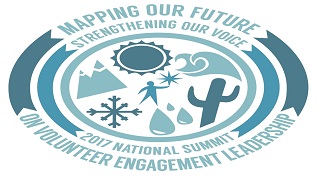The Power of Investing in Volunteer Engagement

As family foundations, we are always looking for leverage. Where and how can we invest our limited assets in ways that will produce the best returns? Will organizations we funded in the past survive these times of shrinking resources and growing needs? As grant makers, we are often called upon to “fill in the gaps.”
As investors in the nonprofit sector seeking innovative opportunities to maximize our efforts, we must challenge ourselves to better support and build organizational capacity. A logical and often overlooked solution is supporting effective volunteer engagement and the infrastructure that sustains it.
For 20 years prior to the creation of our family foundation, The Leighty Foundation, I worked in the field of volunteer engagement – both as a practitioner and national trainer. During that time, I saw firsthand the effect that well placed and equipped volunteers had on the accomplishments of many organizations. I also experienced how poorly many agencies engaged volunteers, thus missing out on the potential of donated manpower to greatly impact their critical missions. It became apparent to me that how well an organization empowered their volunteer workforce was truly a bell weather for how well the entity was managed overall.
When creating our family foundation, we agreed that supporting organizations in building their capacity to engage volunteers would increase their ability to accomplish their missions, and therefore, their long-term sustainability. This strategy has provided a tremendous return on our investment in building the capacity of our grantees to harness volunteer energy.
Current research supports our approach, demonstrating a strong connection between organizations which operate with volunteer engagement as a core strategy for mission accomplishment, and the overall health and effectiveness of the organization.Take for example:
- Organizations that fundamentally leverage volunteers and their skills to accomplish their missions are significantly more adaptable, sustainable, and capable of going to scale. (1)
- Organizations that engage volunteers are as equally effective in accomplishing their mission as their peers without volunteers, but at almost half the median budget. (1)
- Volunteers give up to ten times more money than non-volunteers, and most donate to the organizations in which they are involved. (2)
- Effective volunteer engagement has been shown in some cases to reap up to a $6 return on every dollar invested when considering the financial value of volunteer involvement. (3)
However, it’s not as simple as increasing the number of people who want to volunteer. To effectively tap volunteer resources requires building innovative organizational infrastructures to connect those who want to donate their time with high-impact opportunities that empower them to make a real difference.
Research shows that effective volunteer engagement:
- Is linked to stronger, more effective, and more efficient organizations as a whole.
- Is directly related to increased funding for the organization.
- Is strengthened by ongoing training and development.
Too often volunteerism is seen as a program. As funders, we must recognize that volunteer engagement is not a “program” in itself, but a cost-effective strategy to assist all organizations and community groups in accomplishing their diverse missions. When volunteers are relegated to “program” status, they become an audience to be served, not partners in fulfilling the mission.
The sad truth is that a large percentage of nonprofit organizations that say they desperately need volunteer help also say they do not have the infrastructure to effectively deploy additional volunteers. As a result, poor management and lack of support is one of the primary reasons people stop volunteering.
When evaluating organizations you are considering funding, these five questions can help you assess their capacity for volunteer engagement:
- Volunteer Involvement. How does the organization determine the best way to involve volunteers in meeting its mission?
- Staff Support. Does the organization have a professionally trained volunteer service director? Do staff members work closely with volunteers in the agency? If so, what training do they receive to prepare them to partner with unpaid staff?
- Training and Recognition. How are volunteers trained or oriented about their work and the agency? And how are they recognized for their contributions to the organization’s mission?
- Impact. How does the organization evaluate the overall impact of volunteer involvement?
- Connection to Mission. How does the involvement of volunteers enhance or support the project goals and the organization’s mission?
As funders, we pay great attention to how potential grantees steward their financial resources, but do we pay equal attention to how they lead and manage their human resources?
Volunteers are a vastly underutilized, yet virtually unlimited renewable resource. The need is urgent, the timing is critical, and the support is necessary.
As family foundations, supporting your community’s and your grantees’ ability to engage and empower volunteers can dramatically expand their ability to accomplish their mission, strengthen their communities, and increase the return on your investment.
- TCC Group, “’Positive Deviants’ in Volunteerism and Service: Research Summary,” http://www.pointsoflight.org/service-enterprise-initiative/research
- Fidelity Charitable, “Fidelity®Charitable Gift Fund Volunteerism and Charitable Giving in 2009 Executive Summary” https://www.fidelitycharitable.org/docs/Volunteerism-Charitable-Giving-2009-Executive-Summary.pdf
- Points of Light, “Where Should Nonprofits Use Volunteers? Everywhere.” http://www.pointsoflight.org/blog/2013/10/22/where-should-nonprofits-use-volunteers-everywhere
